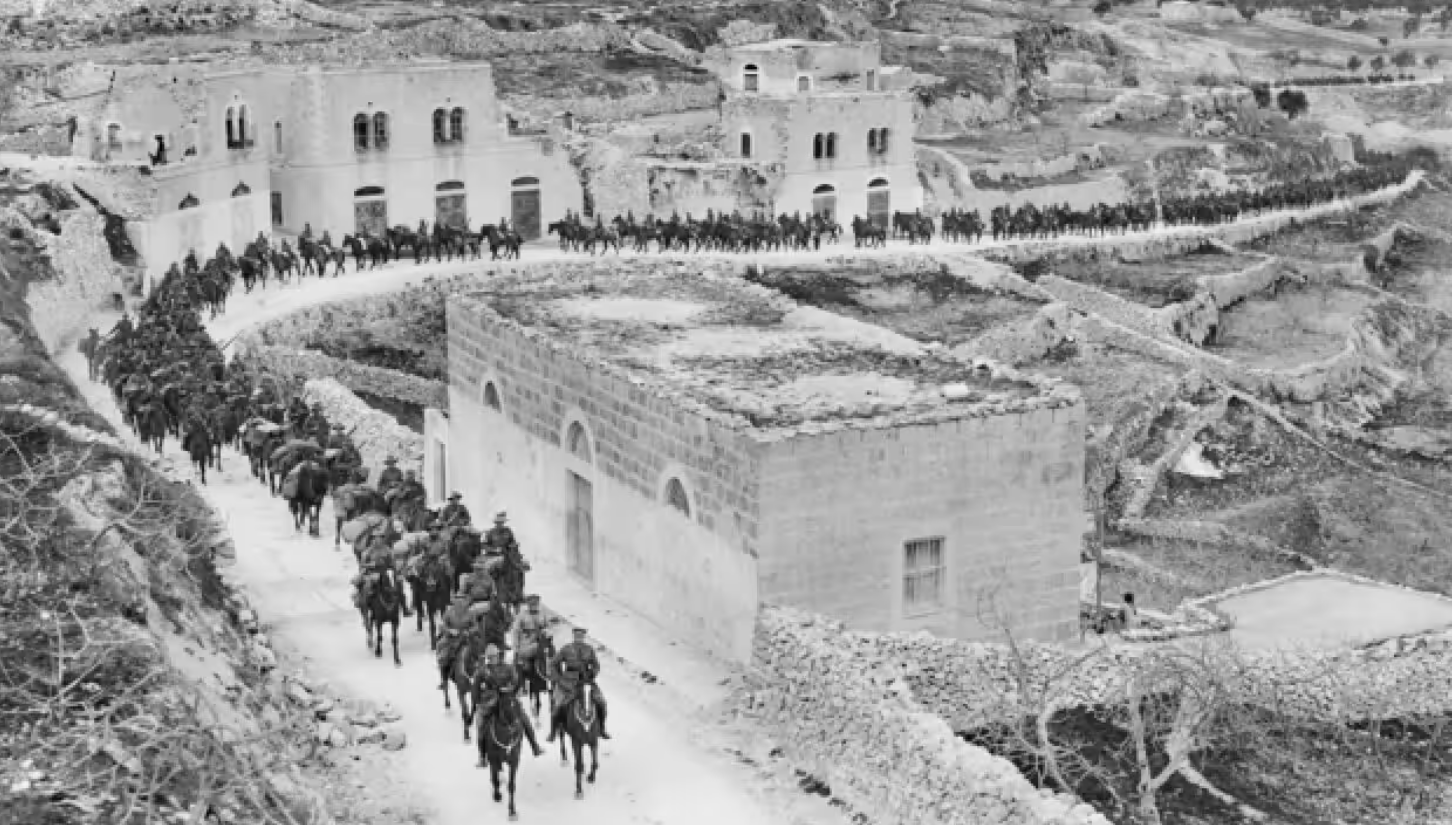The ANZAC spirit they would prefer you forget

As the First World War neared its end, ANZAC soldiers charged through the Palestinian village of Surafend al-Amar in a rum-soaked orgy of violence. It was early evening on 10 December 1918, and around 200 soldiers entered the village, expelling some of the women and children. Then they proceeded to bayonet and burn their way through the community, killing between 40 and 137 civilians.
In a taped recording held in the Australian War Memorial archives, first brought to public attention by author Paul Daley, Ted O’Brien, from the celebrated Australian Light Horse, related that the men “had a good issue of rum” and “done their blocks” when they “went through [the village] with a bayonet”.
This episode is unlikely to have made it into any dawn service speeches. After all, ANZAC Day is not about remembrance; it’s about selective amnesia. Recalling the horror of trench warfare only to venerate the sacrifice of the fallen is an exercise in avoiding fundamental truths about imperialist conflict: that the sacrifices were at the altar of profit, power and empire.
There is a line running from the violence of the ANZACs in Surafend to the genocidal violence Israel is unleashing on Gaza. That line charts the course of imperialism, profit and colonialism, which have shaped and reshaped the Middle East.
What were Australian diggers doing in Palestine in 1918 anyway? They certainly were not there for “mateship”. Australian soldiers played an important role conquering territory in what would become British mandate Palestine.
The British colonial possession of Palestine had already been secured by the generals of the allied forces long before Australian troops set foot in Gaza. In late 1915 and early 1916, British diplomat Mark Sykes and French counterpart François Georges-Picot had drawn up a secret agreement giving London control of Palestine and Paris control of Syria when the war concluded. With a few strokes of a pen, the Sykes-Picot agreement had carved up the Middle East, deciding the fate of millions.
(Incidentally, the failed campaign that landed Australian troops at Gallipoli was actually part of upholding the 1915 Constantinople Agreement between the British and the Russians. The deal promised the Russian tsar Constantinople (Istanbul) as part of the postwar carve-up if he agreed to keep sacrificing his peasants in the eastern front against Germany.)
Over the past few months, those opposed to genocide have learned the names of many towns and cities across the Gaza Strip. We watched in horror as the Israeli military obliterated Gaza City, occupied Khan Yunis and laid siege to Rafah.
In World War One, the ANZACs knew these towns well. They were the sites of victories for the British Empire as its forces swept from Cairo across the Sinai Peninsula, driving back the Ottomans and occupying territory soon to be conquered by the major European powers—not only Gaza, Beersheba and Jerusalem, but also Beirut, Damascus and Baghdad.
The ANZACs played a major role in the violence that established British mandate Palestine. This was an essential precondition for the Nakba (“catastrophe” in Arabic), when 750,000 fled or were driven from their homes with the establishment of Israel, and for the occupation and apartheid system Palestinians endure to this day.
As Australian troops captured Beersheba (just south of today’s West Bank) on 31 October 1917, the British war cabinet approved the text of the Balfour Declaration announcing British support for the Zionist aspiration to secure a foothold in Palestine. This was a pivotal part of the chain of events leading to the Israeli declaration of independence in 1948.
The Zionists have not forgotten this legacy. At the 100th anniversary commemoration of the battle, in the modern Israeli city of Be’er Sheva, Prime Minister Benjamin Netanyahu declared that the ANZACs had “liberated Beersheba for the sons and daughters of Abraham”. Australian Prime Minister Malcolm Turnbull added that the ANZAC victory “did not create the state of Israel but enabled its creation”.
In World War One, the Labor Party was as committed to the cause of imperialism as it is today. Labor PM Andrew Fisher declared at the outbreak of war that Australia would fight for the British Empire “to the last man and the last shilling”.
There’s another tradition from the First World War that’s worth remembering, but it isn’t talked about in the dawn services or any of the flag-waving celebrations of militarism. It’s the tradition of anti-imperialist resistance, class struggle and revolution.
World War One was a time of bitter class conflict. Against the backdrop of massive wartime repression and persecution of radicals, there was a wave of struggle, from the Great Strike of 1917 to the two referendum campaigns that defeated conscription.
Trade union militants built a Labor Volunteer Army. Thousands of workers pledged to resist industrial or military conscription by the “capitalist military oligarchy.” The Industrial Workers of the World, a revolutionary syndicalist group, played a leading role in the anti-conscription campaign. Among other things, the group published a famous anti-war poster mocking the establishment:
“To Arms! Capitalists, parsons, politicians, landlords, newspaper editors, and other stay-at-home patriots. Your country needs YOU in the trenches!!!”
The experience of many rank-and-file Australian soldiers turned them against the system of capitalism that produced the horror of the trenches. Working-class soldiers returning to grinding poverty were compelled to lead bitter strikes like the 1919 riots in Fremantle and Townsville.
In Europe, insubordination and rebellion in the trenches turned to revolution. The 1917 Russian Revolution was sparked by the crisis of the imperialist war. One of the first actions of the Bolshevik government was immediately to negotiate for peace. The Bolsheviks published all of the secret war agreements of the Allies, including Sykes-Picot, and declared its solidarity with workers and oppressed people around the world.
ANZAC Day, on the other hand, is about burying the secrets to prepare workers for the next slaughter.